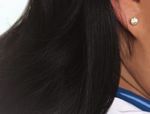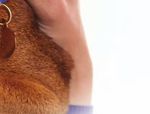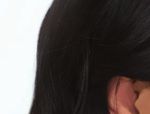Medical Management of Struvite Disease in Cats
←
→
Page content transcription
If your browser does not render page correctly, please read the page content below
Medical Management
of Struvite Disease in Cats
Jody Lulich, DVM, PhD, DACVIM
Carl Osborne, DVM, PhD, DACVIM
Minnesota Urolith Center
University of Minnesota
Saint Paul, MinnesotaKey Points
■ Struvite crystalluria is a risk factor for urolith formation; however, crystalluria alone does not indicate clinical disease.
■ Diagnostic evaluation, including medical imaging of the abdomen, should be performed in cats with lower urinary
tract signs and struvite crystalluria.
■ Nutritional management is an effective and efficient method for eliminating struvite uroliths in cats; most sterile
struvite uroliths dissolve in 2 to 4 weeks using an appropriate dissolution food.
■ Following eradication of struvite uroliths or plugs, recommend a struvite preventive food until cats are at least
7 to 8 years old.
Introduction
Struvite was first described in the medieval sewer systems in Hamburg, Germany and named after the geologist, Heinrich
von Struve, who characterized it. It is ironic that this mineral composed of magnesium, ammonium and phosphate also
precipitates in, and clogs the urinary systems of cats and dogs. In the following sections, we describe three clinical syndromes
(crystalluria, urethral plugs, uroliths) in which struvite affects the lower urinary tract of cats.
H+ H+ H+ Struvite Crystalluria
Increasing ionic concentrations of urinary minerals are the
driving forces underlying crystal formation. As the mineral
H3PO4 H2PO4-1 HPO4-2 PO4-3 concentration increases, urine becomes thermodynamically
unstable and struggles to keep its contents in solution.
Increasing Urine Alkalinity Finally, a concentration is reached at which minerals can no
longer remain dissolved and are forced out of solution as a
Figure 1. The concentration of trivalent ionic phosphate (a building solid phase (crystal formation), decreasing their concentration
block for struvite) is influenced not only by urine phosphorus
concentration, but also by urine pH. As urine becomes more alkaline,
in solution. Now that the concentration of minerals is
the higher concentrations of negatively-charged hydroxyl ions (OH-), lower, urine reestablishes a more favorable thermodynamic
remove the positively-charged hydrogen ions from urine phosphates. equilibrium necessary to retain its fluid properties.
Magnesium, ammonium and phosphorus are the building blocks for the formation of struvite crystals in urine. In addition,
urine pH and its influence on the concentration of trivalent ionic phosphate (PO4-3) play a key role in struvite crystallization.
As urine pH increases, H3PO4, H2PO4-1 and HPO4-2 are rapidly deprotonated (i.e., removal of hydrogen ions), increasing the
concentration of PO4-3, a principal component and driving force for struvite crystal formation (Figure 1).
Diagnostic Considerations - Be skeptical of the clinical importance
of crystalluria observed in samples improperly collected (e.g., from the
floor), or improperly stored (greater than 2 hours or refrigerated prior
to analysis) 1. These in vitro phenomena may not represent what is
occurring in the patient.
Interpret the severity and persistence of crystalluria in light of urine
pH and specific gravity. Increasing alkalinity and increasing urine
specific gravity promote struvite crystal formation.
Crystalluria is a marker of urine saturation and a risk factor for urolith
formation. Therefore, consider medical imaging of the abdomen of
cats with lower urinary tract signs and struvite crystalluria (Figure 2). Figure 2. Urine sediment from a cat with hematuria
revealed struvite crystals of various sizes and red blood cells.
2Persistently alkaline urine and subsequent struvite crystalluria may be an indication to
Table 1. Struvite urethral plugs
culture the urine for urease-producing microbes including Staphylococcus sp., Proteus sp. in different age groups of cats
and Ureaplasma sp. evaluated at the Minnesota
Urolith Center from 2004 to
2005 (n = 906).
Therapeutic Strategies - Do not assume that microscopic crystals are the cause for lower
Age Range % of
urinary tract signs. Struvite crystals have been observed in urine of cats that are apparently (years) Cats
healthy, in addition to those with: 1) sterile struvite uroliths, 1-2 8
2) infection-induced struvite uroliths, 3) non-struvite uroliths, 4) urethral plugs that contain 2–4 30
struvite crystals, and 5) urinary tract disease without uroliths (e.g., feline idiopathic cystitis). 4–6 26
6–8 17
In young male cats with persistent struvite crystalluria, feed therapeutic foods that increase
8–10 9
urine solubility of struvite to minimize formation of struvite crystalline-matix urethral plugs.
10–12 6
Between 2004 and 2005, the Minnesota Urolith Center analyzed urethral plugs from 906
cats; 81% of these cats were between 1 and 8 years old (Table 1). On the basis of these
epidemiologic data, we recommend feeding struvite preventive foods to male cats with
persistent struvite crystalluria until they are at least 7 to 8 years old.
Table 2. Mineral composition of
Struvite Urethral Plugs
feline urethral plugs submitted Urethral plugs are most often composed of struvite crystals and non-crystalline matrix,
for quantitative analysis to the and are a common cause for urethral obstruction in cats. Between 1981 and 2008, the
Minnesota Urolith Center from
Minnesota Urolith Center analyzed urethral plugs from 6,704 cats; approximately 84%
1981 to 2008 (n=6,704).
were composed of struvite and < 1% were composed of calcium oxalate (Table 2).
Predominant Percent of These findings are significant because although the prevalence of calcium oxalate uroliths
Mineral Plugs
Type Submitted has increased dramatically in cats since 1981, the prevalence of calcium oxalate urethral
plugs has remained very low during the same period. Of 394 urethral plugs submitted to
Struvite 84
the Minnesota Urolith Center in 2008, 1% were calcium oxalate and 90% were struvite.
Matrix 11
(no crystals)
From 1980 up to 2000, the prevalence of urethral obstructions significantly decreased
Mixed 2.5
in cats (Figure 3).2 We attribute this reduction in disease to the availability and use of
CalciumFeline Urethral Obstructions/Urethrostomies
25
19.4
Number Cats per 1,000
20
18.1
14.9
15
14.9
10
7.5 7.4
8.0
5
3.7 3.5 4.5
0
1980 1985 1990 1995 1999
Urethral Obstructions Urethrostomies
Figure 3. Occurrence of urethral obstructions and perineal urethrostomies in cats evaluated at North American
veterinary teaching hospitals decreased during a 20-year period.2
Struvite Uroliths
Although surgery plays an important role in the management of uroliths in some patients, detection of uroliths is not always
an indication for surgery. For example, struvite uroliths can be effectively managed by medical therapy alone. In contrast, all
cases that undergo surgical intervention also require medical management. If surgery is the only form of therapy, uroliths are
likely to recur.
Two dissolution foods have been evaluated in cats with struvite uroliths.4,5 Radiographic disappearance of sterile struvite
uroliths was achieved within a median of 32.5 days when cats were fed Hill’s® Prescription Diet® s/d® Feline pet food.4 In
another study, radiographic disappearance of struvite uroliths was achieved within a mean of 30 days feeding Medi-Cal®
Feline Dissolution Formula.5 In both of these prospective studies, visible hematuria and dysuria subsided prior to complete
urolith dissolution (by 2 weeks for s/d Feline and 19 days for Dissolution Formula). Urethral obstruction was not reported in
any study; however, many males (10 of 13) in one study had a previous perineal urethrostomy performed and two formed
post-surgical urethral strictures.4 In the other study, 31% of cats were male and there was no indication whether any cats had
perineal urethrostomy performed.5
Despite the effectiveness of nutritional management of struvite uroliths, some veterinarians prefer to remove uroliths
surgically because of perceptions that surgical management is more effective, is less expensive, controls clinical signs quicker
and will not be associated with urethral obstruction as uroliths decrease in size with medical therapy. These perceptions are
not supported by published evidence. Medical dissolution of sterile struvite uroliths is a compassionate, safe, efficacious and
cost-effective method for eradicating sterile struvite uroliths. In our opinion, it should be the current standard of care.
Diagnostic Considerations - Urinary bladder palpation is not reliable for detecting struvite uroliths. In two studies, 10% or
less of cases were identified by palpation.4,5 Ultrasonography of the urinary bladder is a sensitive method for detecting uroliths
(Figure 4); however, survey radiography affords the advantage of providing urolith characteristics that are important for
predicting their mineral composition. Moderately radiopaque, discoid uroliths are consistent with a mineral composition of
struvite (Figure 5).
4Perform a complete urinalysis, including urine sediment
examination. Struvite crystalluria is helpful for predicting the
mineral composition of uroliths but is not always present.
Culture urine for aerobic bacteria to differentiate sterile struvite
uroliths from those that formed as a consequence of urinary
tract infection. The most common bacteria associated with
infection-induced struvite uroliths is Staphylococcus sp.
Therapeutic Strategies - Feeding canned formulations of
struvite dissolution foods may be associated with quicker
Figure 4. Urinary bladder sonogram of a 2-year-old, male-neutered
dissolution times compared with dry formulations. In one
domestic shorthair cat with recurrent hematuria. Inside the
dependent portion of the urinary bladder is a small echogenic study of cats with struvite uroliths, feeding the canned version
urolith with characteristic distal shadowing. The urolith was of a struvite dissolution food was associated with urolith
surgically removed; quantitative mineral analysis revealed that it
resolution in a mean time of 26 days compared with 34 days
was composed of 100% struvite.
for cats eating the dry version; however, this difference was not
statistically significant.5
Antimicrobic therapy is unnecessary for dissolution of sterile
struvite uroliths; consumption of the struvitolytic diet is all that
is required. To dissolve infection-induced struvite uroliths, a
dissolution food and antimicrobics need to be administered
throughout the entire period of dissolution. This duration of
antimicrobic therapy is necessary because bacteria remain
viable within the matrix of uroliths.
To evaluate effectiveness of nutritional management and
owner compliance, assess the patient by radiography and
urinalysis every 2 to 3 weeks. If treatment is effective, there
Figure 5. Survey radiograph of a 7-year-old, female-spayed
should be no struvite crystalluria and uroliths should be
domestic shorthair cat with struvite urolithiasis. Feline struvite
uroliths are usually disk-shaped and moderately radiopaque. decreasing in size.
Urethroliths are less amenable to nutritional dissolution because they are not continually surrounded by medicated urine.
Therefore, urethroliths need to be flushed back into the urinary bladder and their position periodically monitored to
determine success of dissolution therapy.
Candidates for urolith removal (e.g., surgery) include those with: 1) persistent or recurrent urolith-induced obstruction
despite appropriate repositioning into the urinary bladder, 2) static or increasing urolith size or number despite medical
therapy to inhibit their growth, 3) poor response because of poor compliance by the client or the patient with the therapeutic
recommendations, or 4) persistent patient discomfort despite sufficient analgesia.
After radiographic resolution of uroliths, continue the dissolution food for an additional 4 weeks, then gradually transition
to a struvite preventive food to abolish struvite crystalluria until the cat is at least 7 years old. Although struvite uroliths have
been recognized in all age groups, cats 4 to 7 years of age were at greatest risk in one study.6
To prevent urolith recurrence, foods that promote aciduria (pH < 6.5), hypomagnesuria and less concentrated urine are
associated with the greatest success. When preventing infection-induced struvite uroliths, early detection and eradication of
recurrent urinary tract infections is essential.
5Summary
Struvite crystalluria indicates increased risk for struvite disease; however, its presence alone is not a reason for therapeutic
intervention. Diagnostic evaluation, including a urinalysis and medical imaging, is indicated in all cats with signs of lower
urinary tract disease. Nutritional management is an effective method for eliminating struvite uroliths — most sterile struvite
uroliths dissolve in 2 to 4 weeks after using an appropriate dissolution food. After elimination of struvite uroliths or plugs,
nutritional management with a struvite preventive food is indicated to decrease risk of recurrence until the cat is at least
7 to 8 years old.
References
1. Sturgess CP, Hesford A, Owen H, et al. An investigation into the effects of storage on the diagnosis or crystalluria in cats.
J Fel Med Surg 2001;3:81-85.
2. Lekcharoensuk C, Osborne CA, Lulich JP. Evaluation of trends in frequency of urethrostomy for treatment of urethral
obstruction in cats. J Am Vet Med Assoc 2002;221:502-505.
3. Lulich JP, Osborne CA. Safely unobstructing the urethra of male cats. Proceedings Hill’s Symposium on Multimodal
Management of FLUTD 2010:1-7.
4. Osborne CA, Lulich JP, Kruger JK, et al. Medical dissolution of feline struvite urocystoliths: prospective clinical study of 30
cases. J Am Vet Med Assoc 1990;196:1053-1063.
5. Houston DM, Rinkardt NE, Hilton J. Evaluation of efficacy of a commercial diet in the dissolution of feline struvite bladder
uroliths. Vet Ther 2004;5:187-201.
6. Lekcharoensuk C, Lulich JP, Osborne CA, et al. Association between patient-related factors and risk of calcium oxalate
and magnesium ammonium phosphate urolithiasis in cats. J Am Vet Med Assoc 2000;217:520-525.
An electronic version of this article may be downloaded from the web address below.
www.HillsVet.com/ConferenceProceedings
6You can also read



























































